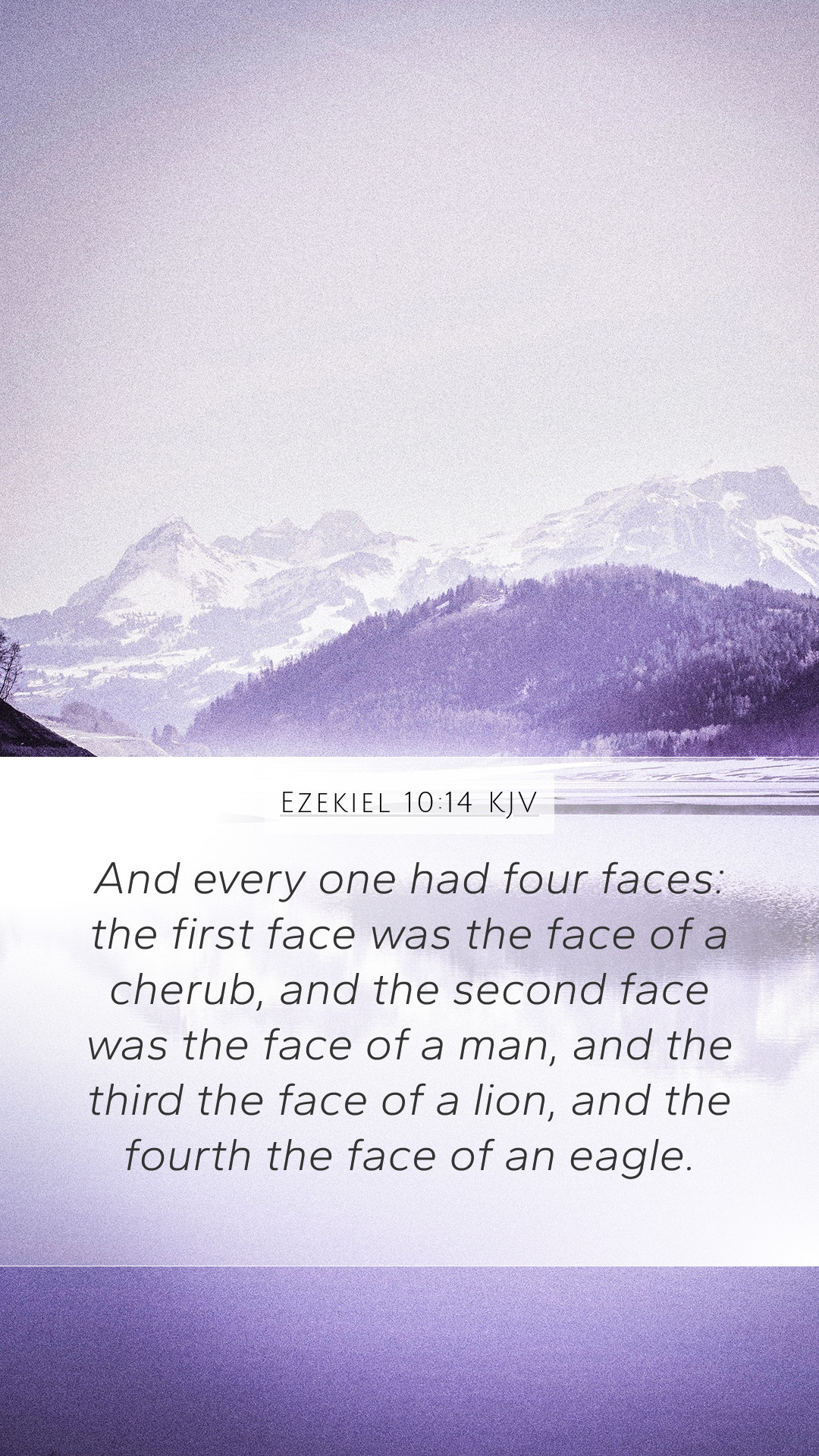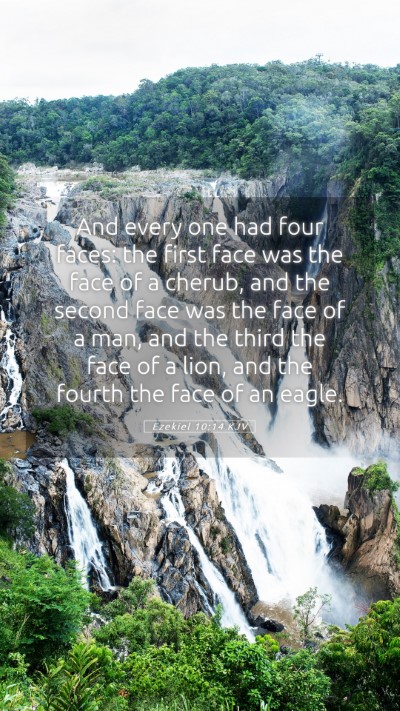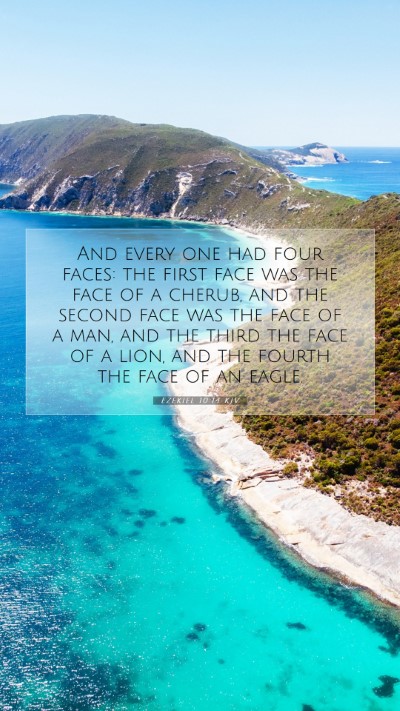Ezekiel 10:14 - Commentary and Analysis
Bible Verse: Ezekiel 10:14 - "And every one had four faces: the first face was the face of a cherub, and the second face was the face of a man, and the third the face of a lion, and the fourth the face of an eagle."
This verse describes an extraordinary vision experienced by the prophet Ezekiel, highlighting the multifaceted nature of the divine beings known as cherubim. Below, we will explore various insights from respected public domain commentaries, providing a comprehensive understanding of this scripture through detailed exegesis.
Interpretation and Meaning of Ezekiel 10:14
Understanding the Cherubim:
The cherubim depicted in Ezekiel's vision represent a unique order of celestial beings with multiple characteristics, symbolizing various aspects of God's creation and His sovereign rule over it. Each face signifies different attributes:
- Face of a Cherub: Symbolizes knowledge and the wisdom of God, often associated with the throne of God.
- Face of a Man: Represents humanity, emphasizing God's connection and concern for human affairs.
- Face of a Lion: Symbolizes power, majesty, and the authority of God, signifying His role as King.
- Face of an Eagle: Represents swiftness and the ability to soar above earthly concerns, symbolizing God’s omnipresence and omniscience.
Historical Context of Ezekiel's Vision
This passage occurs during a time of great national distress for Israel, as the Babylonian exile was both imminent and devastating. The vision of cherubim serves to remind the Israelites of God's glory and His continuous oversight of the world despite their dire circumstances.
Commentary Insights
Matthew Henry: Henry emphasizes that the cherubim signify God's protective nature and His presence among His people. The four different faces point to the multiplicity of God's interactions with creation. God shows Himself in different ways to meet the different needs of humanity.
Albert Barnes: Barnes notes the symbolic nature of the images and suggests that the diverse faces of the cherubim illustrate the completeness of God's attributes. He interprets the vision as an assurance that despite Israel's sin and estrangement, God's essence remains constant and majestic.
Adam Clarke: Clarke discusses the symbolic meanings behind the faces, analyzing the significance of each creature and how they resonate with the socio-political struggles of Israel. He points out the cherubim's faces as metaphors for divine ministry—showing that God's purpose is executed in various ways, yet always aligning with righteousness.
Application of the Verse
Understanding Ezekiel 10:14 allows for profound applications in our lives:
- Recognizing God’s presence in our challenges and knowing He is actively involved in human history.
- Relying on God’s wisdom and power to guide us through difficult times, as exemplified by the characteristics of the cherubim.
- Understanding the multifaceted nature of God encourages a deeper relationship with Him, knowing He meets us in various ways.
Conclusion
The complexity and rich symbolism in Ezekiel 10:14 invites believers to dive deep into Scripture, encouraging both personal introspection and communal study. For those embarking on Bible study insights or online Bible study, recognizing the completeness of God’s nature enhances our understanding of biblical texts.
Related Bible Cross References
- Exodus 25:18-20 - Describes the cherubim on the Ark of the Covenant, signifying God’s throne and presence.
- Revelation 4:6-8 - Similar imagery of four living creatures, indicating a continuity of God's nature across the scriptures.
- Isaiah 6:2-3 - Details the seraphim, providing insight into the heavenly hosts that glorify God.
Through careful study and interpretation of biblical texts, we gain meaning of Bible verses that enrich our Bible study resources and deepen our faith. May your exploration of Ezekiel and other scriptures lead to transformative understanding and application in your life.


